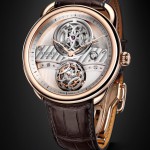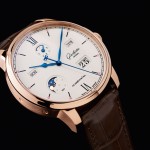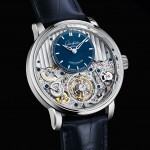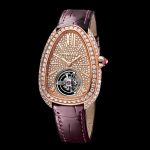Glashütte Original Introduces the Alfred Helwig Tourbillon 1920
Excellent finishing in a staid package.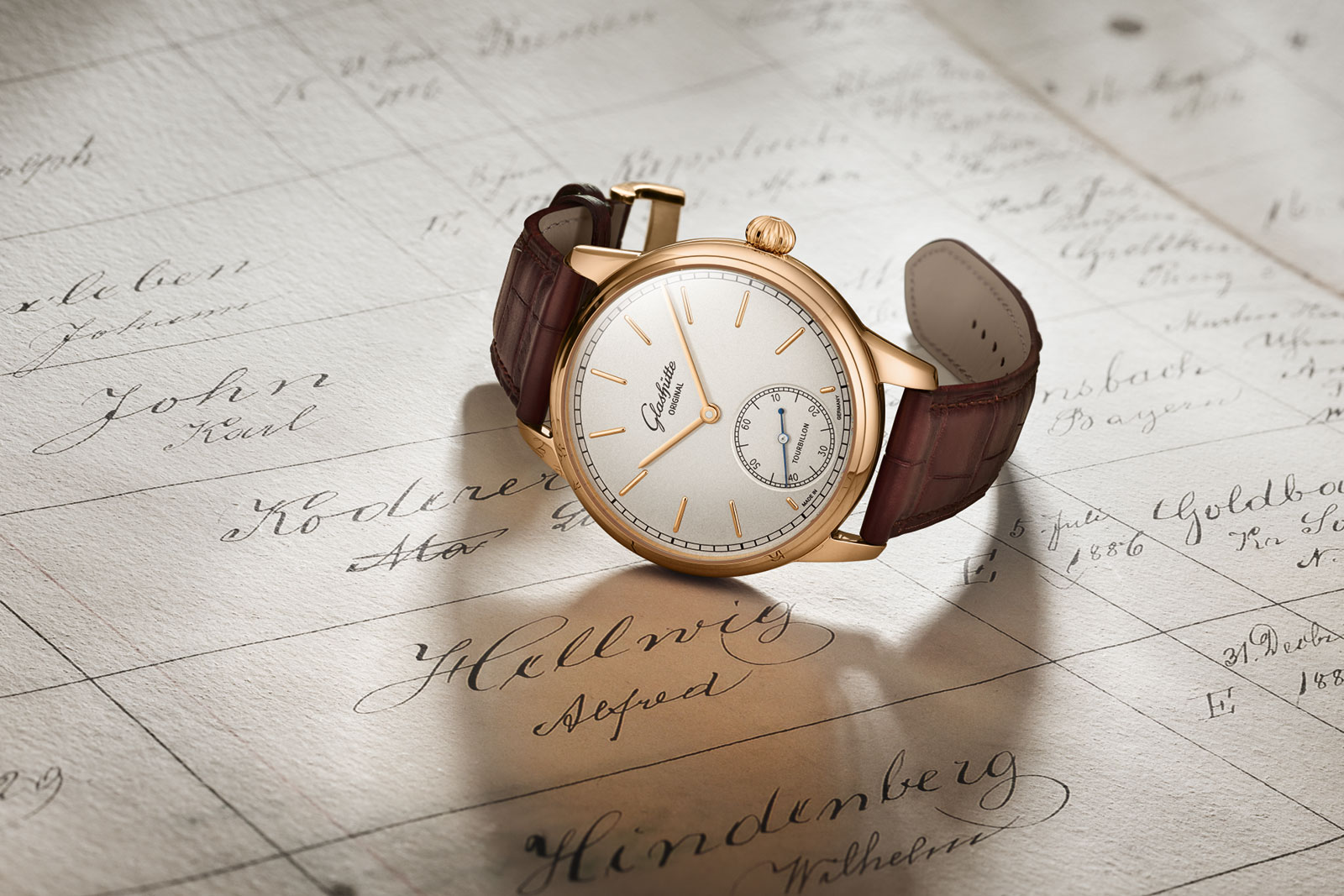
Invented in 1920 by German watchmaker Alfred Helwig, the flying tourbillon marks its 100th year anniversary this year. To commemorate the occasion, Glashütte Original – Helwig spent most of his career in Glashütte, including several decades teaching in the town’s watch school – has unveiled a watch featuring, unsurprisingly, a flying tourbillon.
Limited to 25 pieces, the Alfred Helwig Tourbillon 1920 is pared-back on the front but smartly executed on the reverse, with the cal. 54-01 ticking away inside. Not only does it have an extra-long power reserve of 100 hours, the cal. 54-01 is finished to a high standard that is recognisably superior to earlier Glashütte Original tourbillon movements.
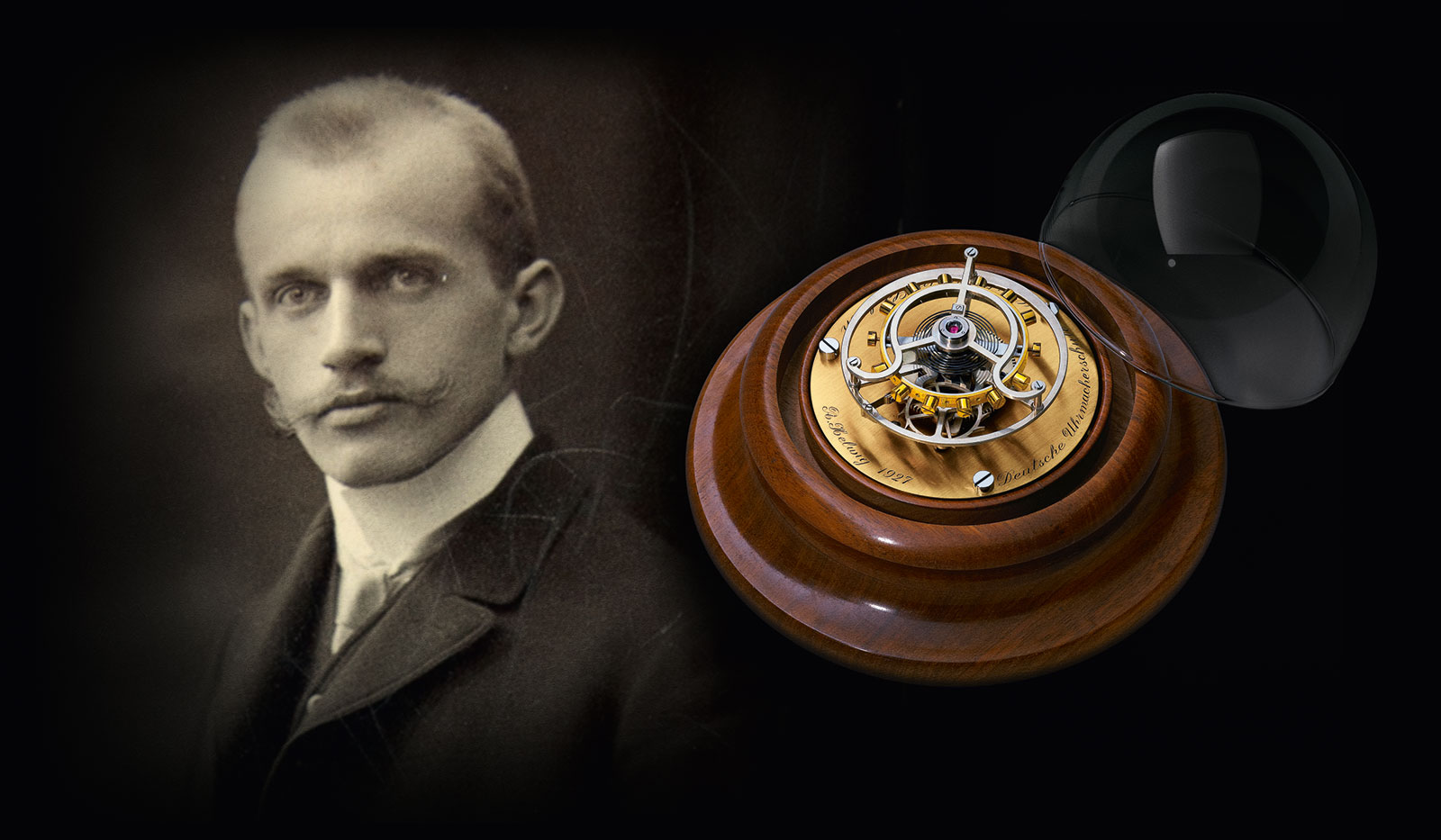
A young Alfred Helwig and a scale model of his invention
Initial thoughts
This is the third tourbillon watch Glashütte Original has launched this year, after this and this. That’s a lot. Although Glashütte Original has had countless tourbillon models in its catalogue over the years, with most being fairly short-lived, what it really excels at are affordable, well-made watches like the Sixties.
Compared to the tourbillons unveiled earlier in the year, both of which were decorated with extensive, floral engraving, the Tourbillon 1920 appears less elaborate – although the movement is finished very well, and very traditionally. The finishing does look excellent, but the US$135,000 price tag feels a bit steep for Glashütte Original. In comparison, the Senator Chronometer Tourbillon is engraved front and back, and boasts several interesting technical features, and costs US$156,000.
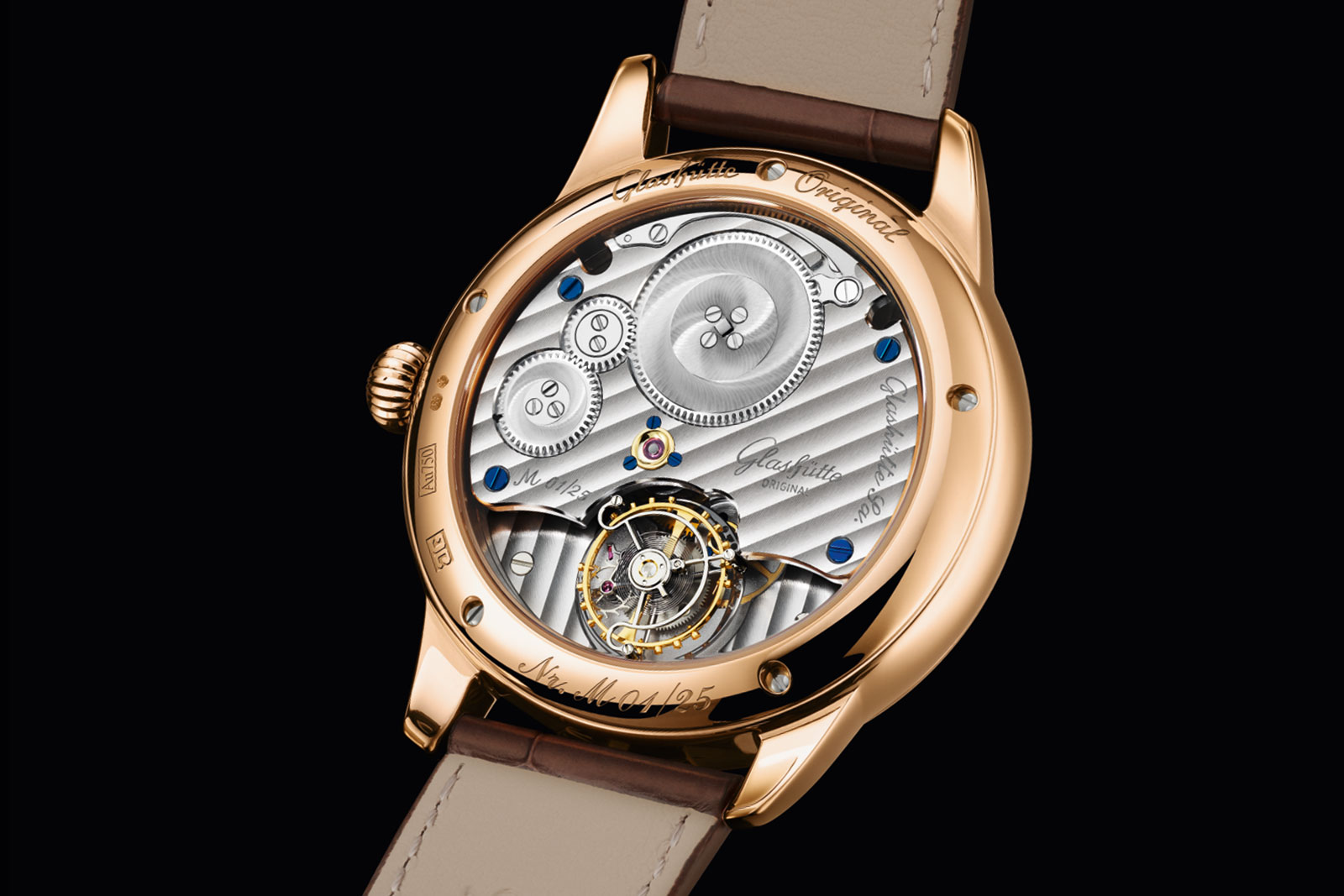
That said, the highlight of the watch is the finishing, which appears to be very, very good. In fact, the finishing looks like it’s several steps up from the finishing on earlier generations of Glashütte Original tourbillons, which typically had neat and clean finishing applied by machine. This, on the other hand, looks to be done by hand, and to a high standard. In addition, the silver-plated finish on the dial is done by hand, as is the engraving on the three-quarter plate of the movement.
Lastly, in contrast to the finishing, the front of the watch falls short of achieving an interesting look. It looks plain, even if the dial was finished by hand.
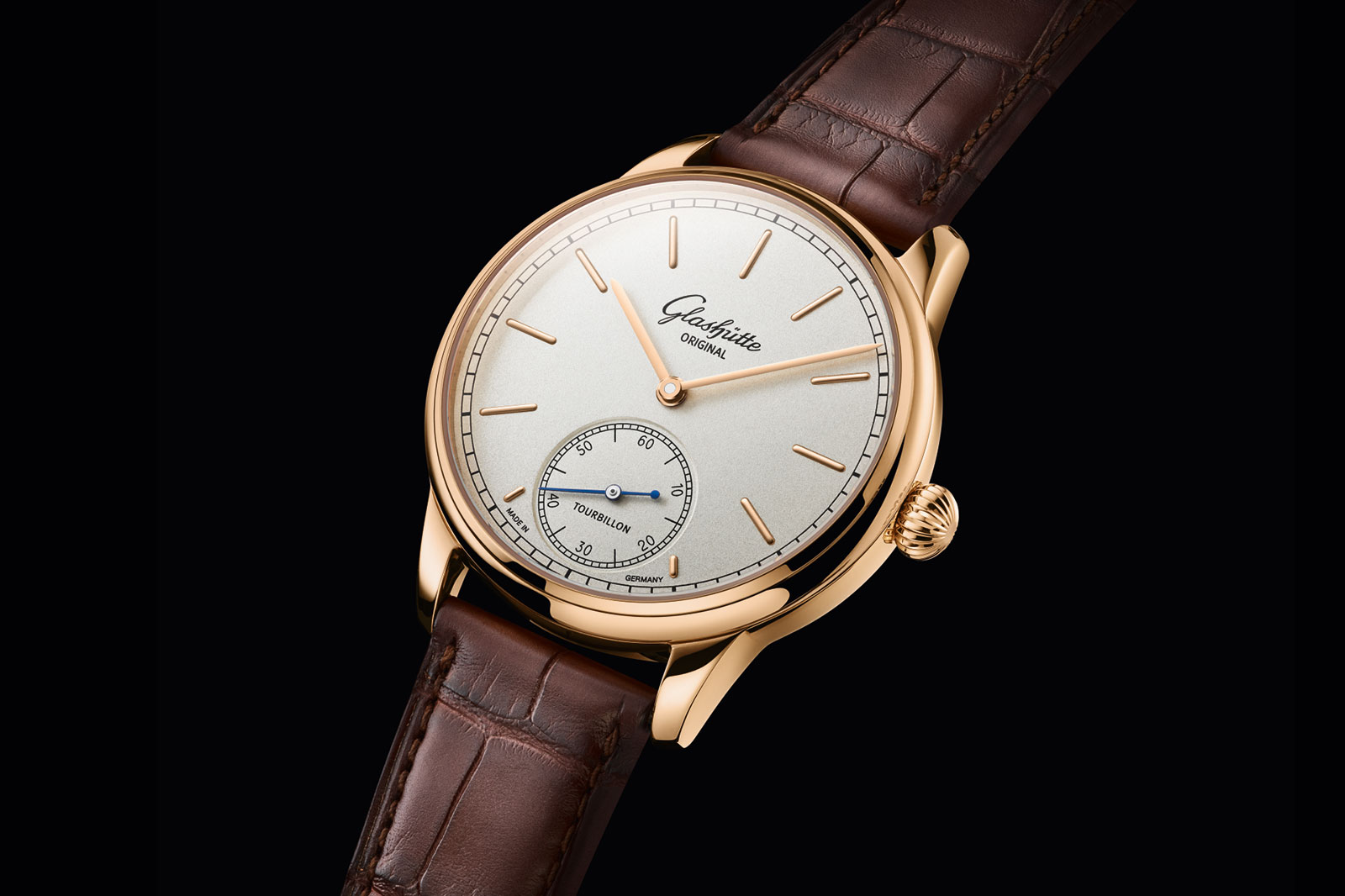
Meticulous, but…
That said, the face of the watch showcases the brand’s skill in manufacturing dials, having acquired a dial factory in Pforzheim, located near Germany’s Black Forest. Started with a disc of solid gold, the dial is then heavily brushed with silver powder, using friction to coat the dial in silver while giving it a grained texture. And the hands and hour markers are solid rose gold, which gives the dial an unquestionably upscale quality.
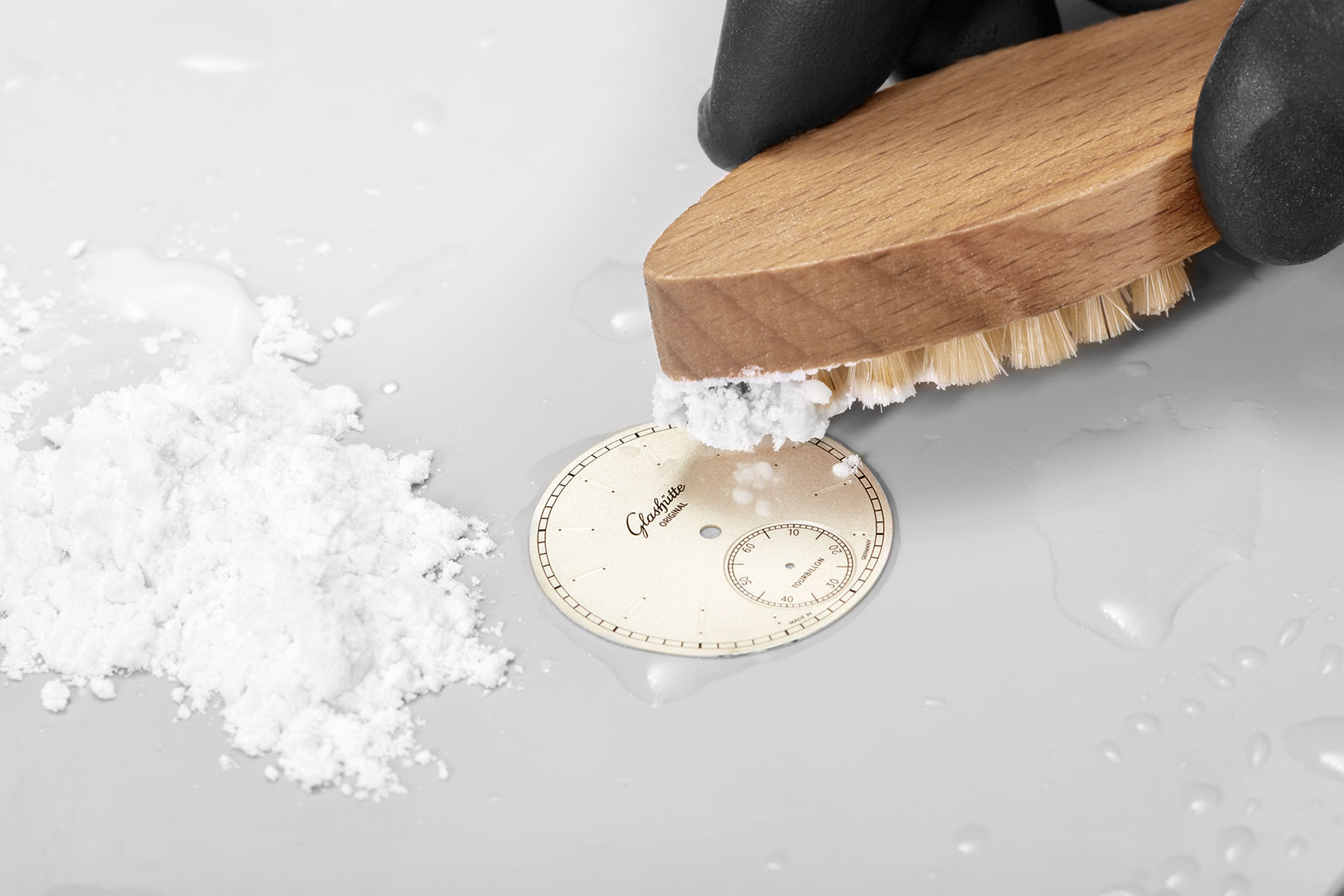
The silver coating process
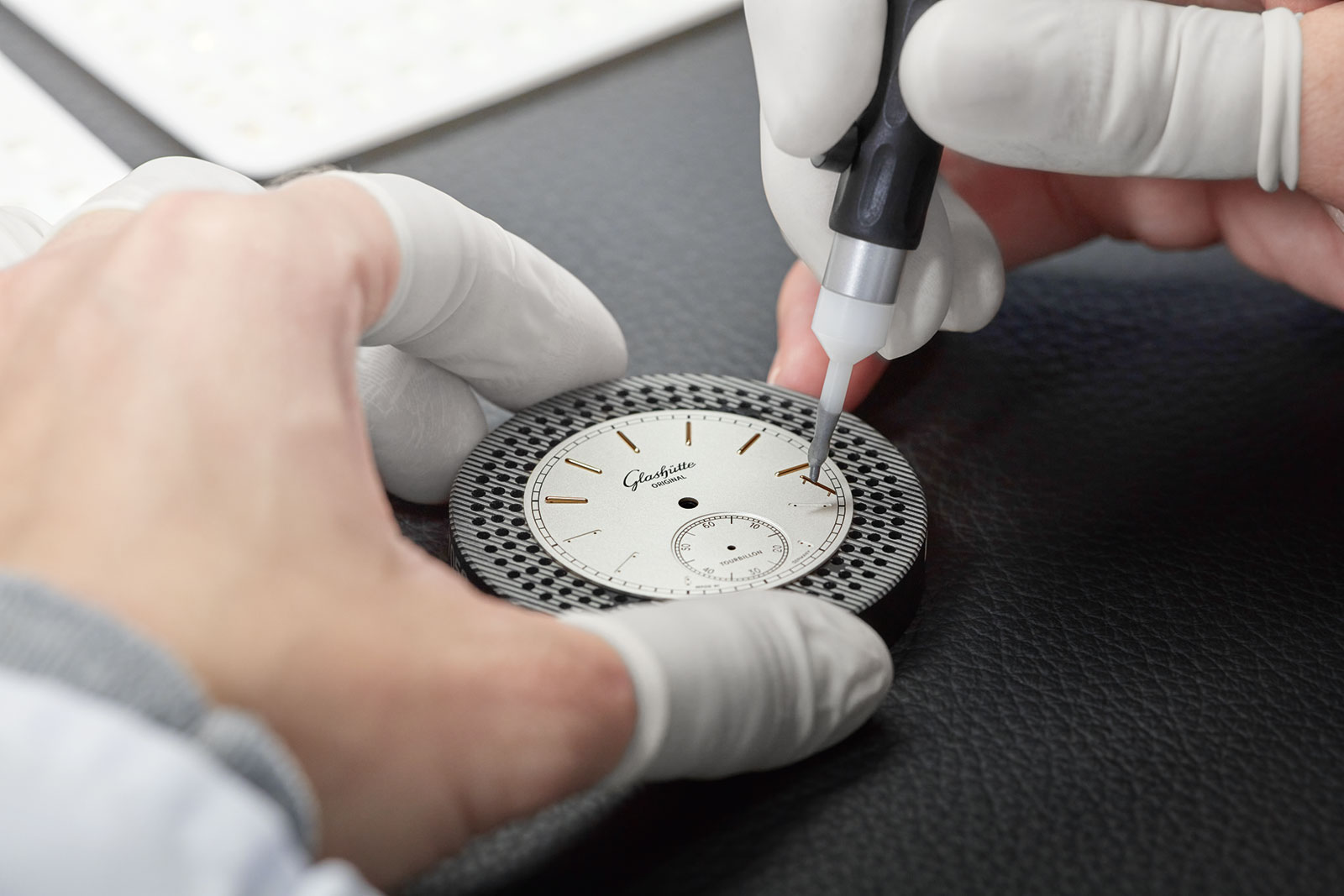
Applying the solid-gold hour markers
While the production of the dial was elaborate, its design is restrained and classical. It has good proportions, with the sub-dial measuring almost almost half the radius of the dial, giving it a balanced, traditional layout.
Nonetheless, the dial does seem a bit bland, especially since the tourbillon is hidden; it’s a thin line between discretion and plainness. Additionally, even they are made of precious metal, the baton hands and indices are too simple. And their rounded ends mean they lack impact, especially when matched with similarly soft lines of the case.
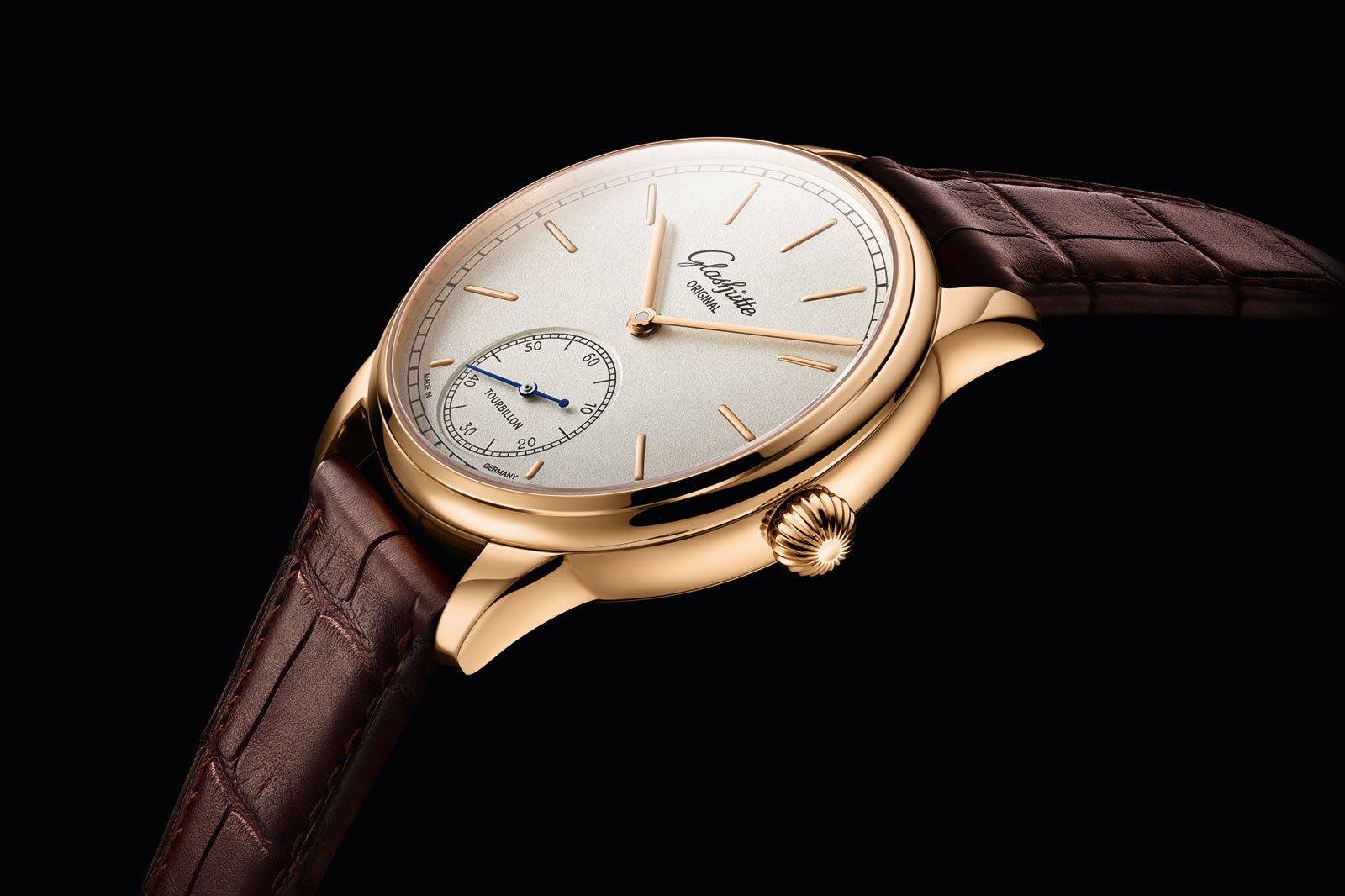
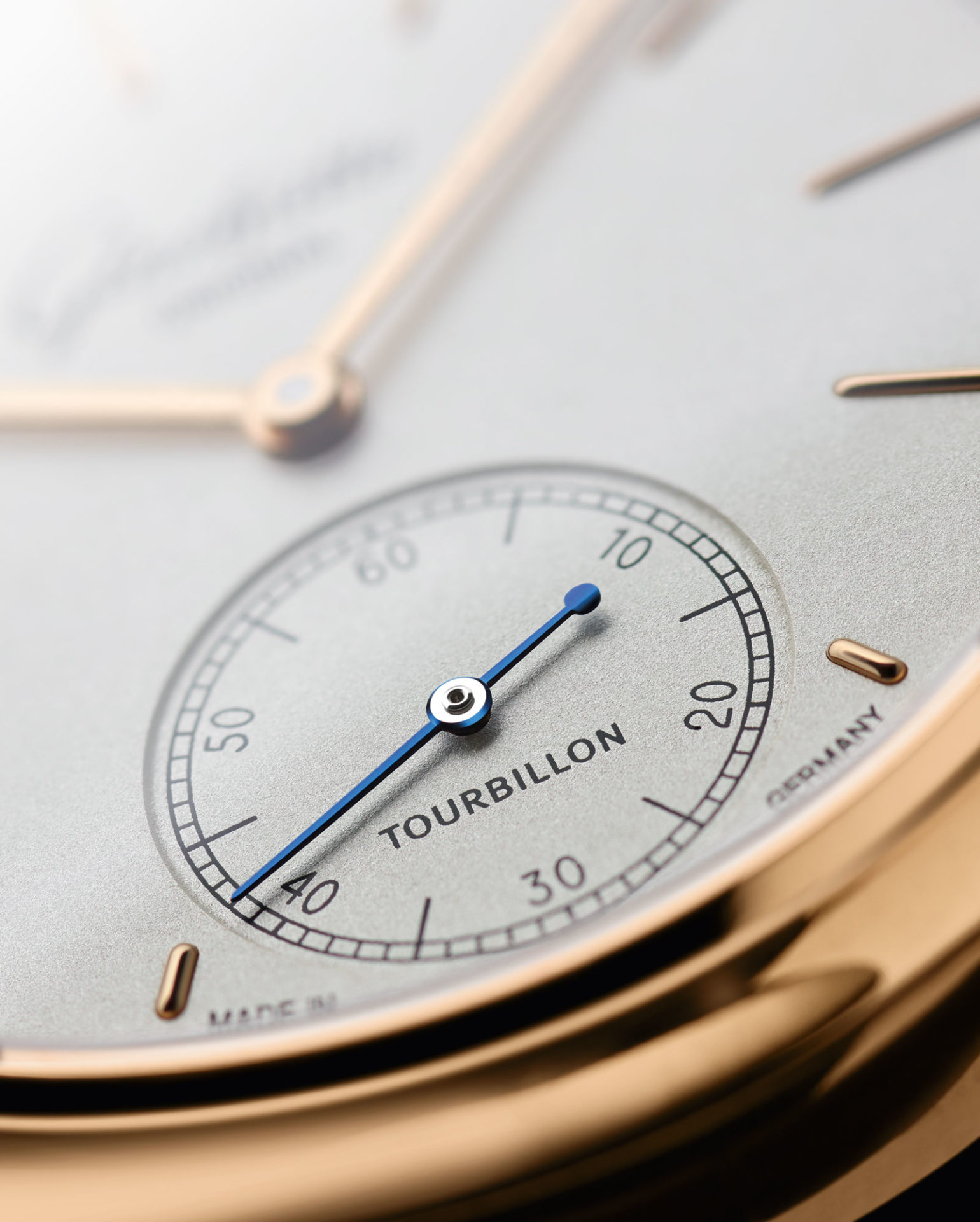
A beautiful back
With a reminder in the form of the “Tourbillon” label on the sub-dial, the movement is visible through the transparent case back. The tourbillon is finished impeccably – again, it’s done better than earlier tourbillons from the brand – with the black-polished steel cage taking the same form as Helwig’s original.
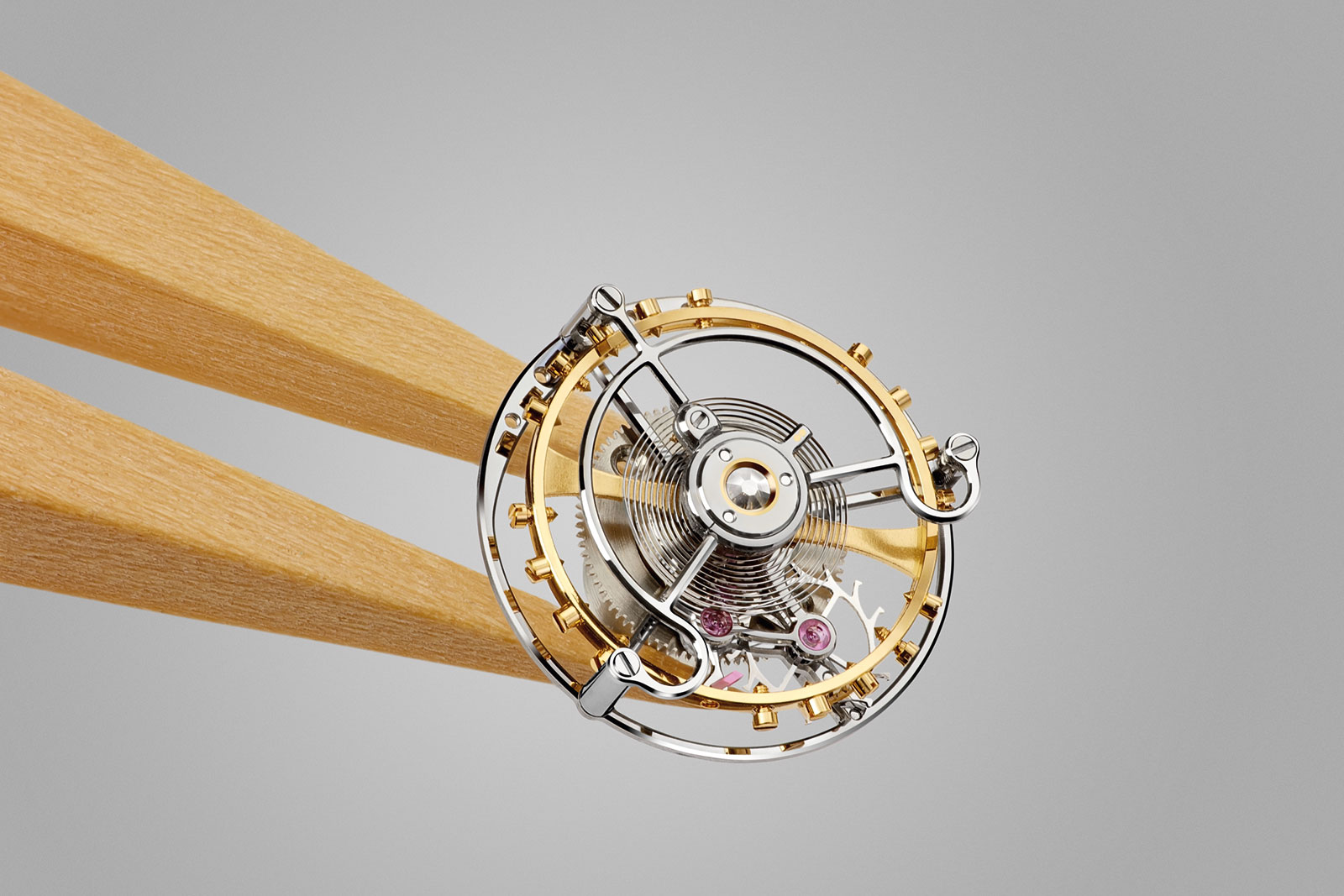
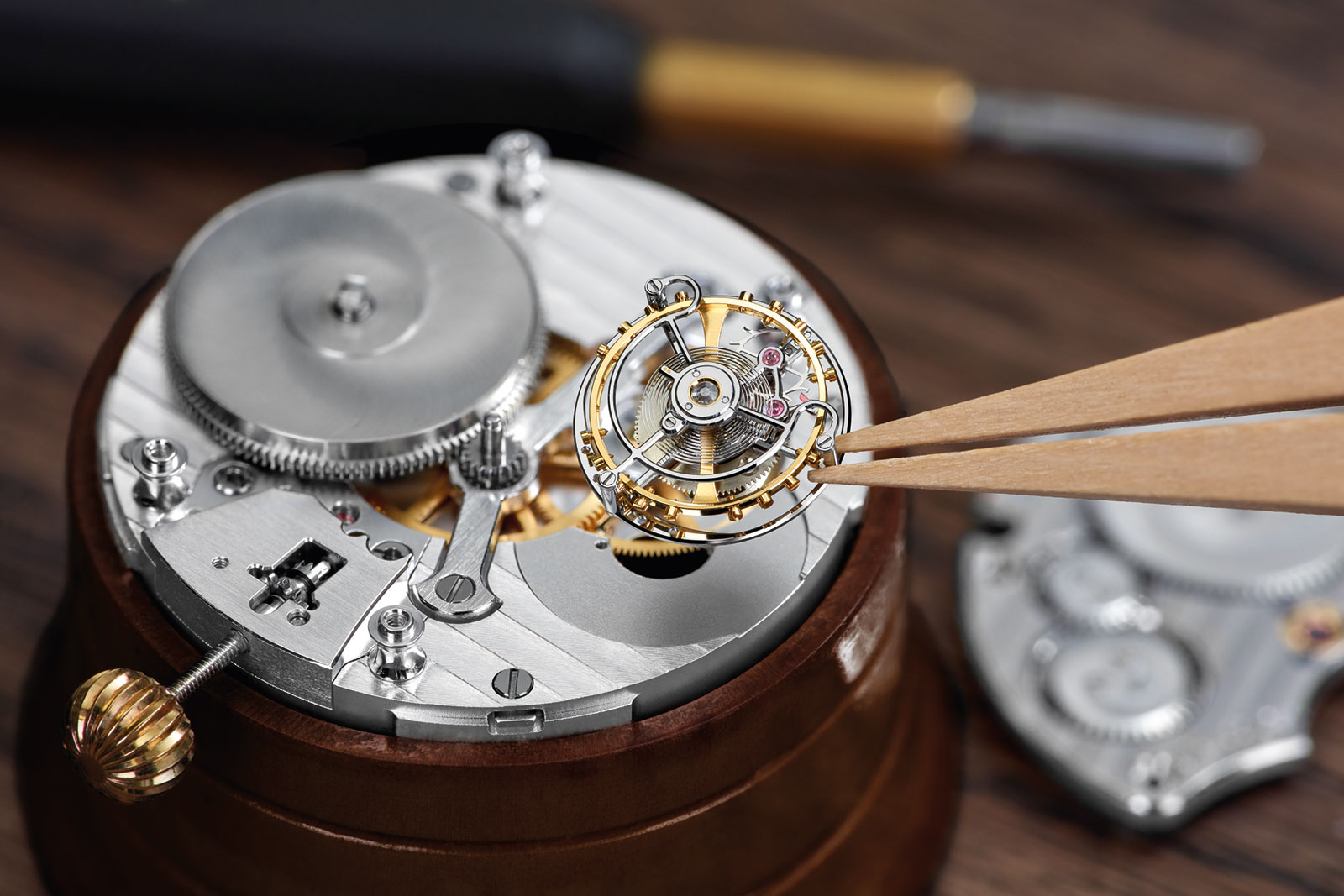
The rest of the cal. 54-01 is property attended to, with double spirals on the ratchet and crown wheels. More importantly, the bevelling of the three-quarter plate is wide and mirror polished, presumably by hand. And the winding click and click spring are both black polished, with fine bevels on their edges.
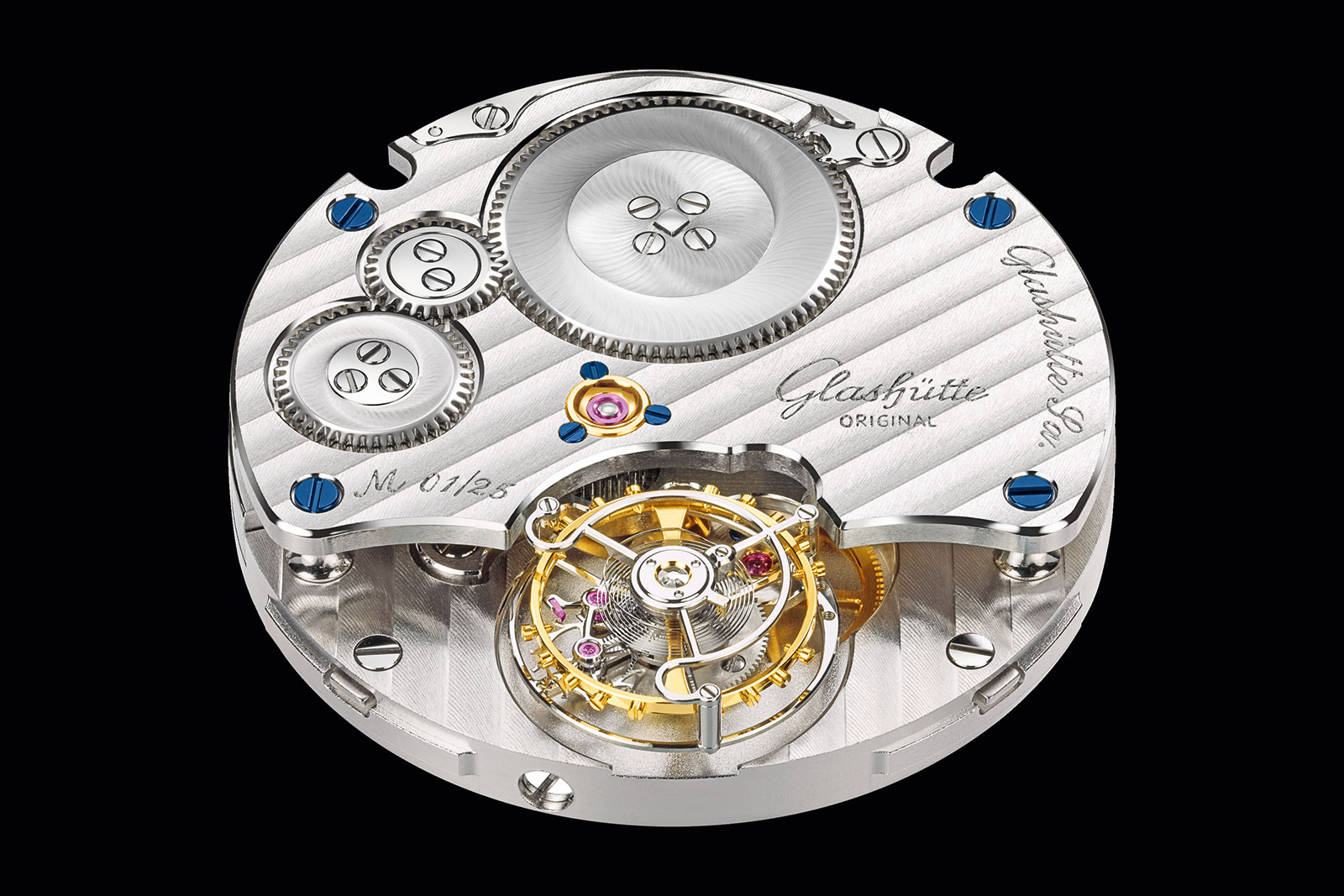
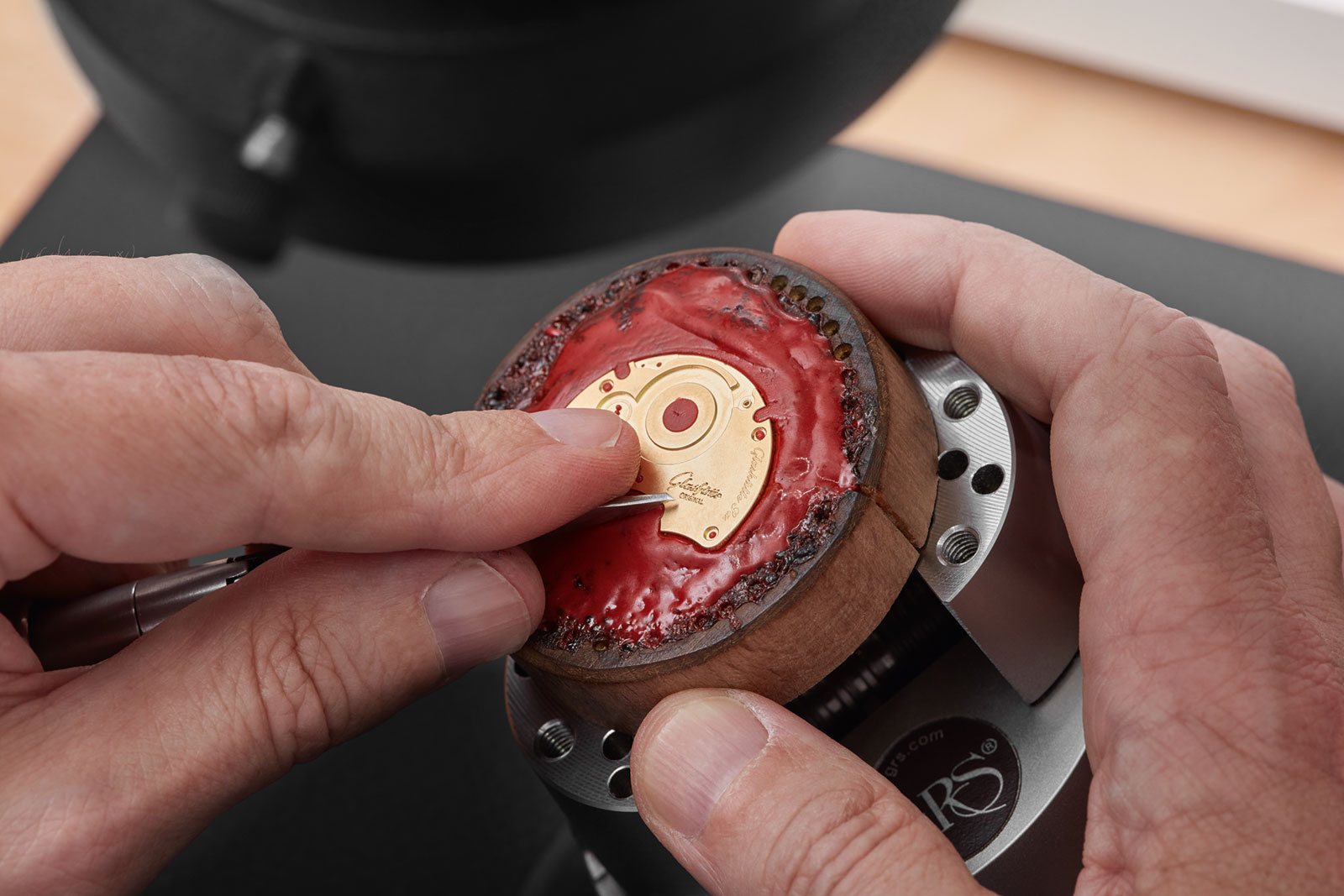
Hand engraving the three-quarter plate
Key Facts and Price
Glashütte Original Alfred Helwig Tourbillon 1920
Ref. 1-54-01-01-01-01
Diameter: 40 mm
Height: 11.6 mm
Material: 18k rose gold
Crystal: Sapphire
Water resistance: 30 m
Movement: Cal. 54-01
Functions: Hours, minutes, seconds, and flying tourbillon
Winding: Hand wind
Frequency: 21,600 beats per hour (3Hz)
Power reserve: 100 hours
Strap: Brown alligator
Limited edition: 25 pieces
Availability: From October at boutiques and authorised retailers
Price: €116,970; or 190,000 Singapore dollars
For more, visit Glashuette-original.com.
Back to top.

